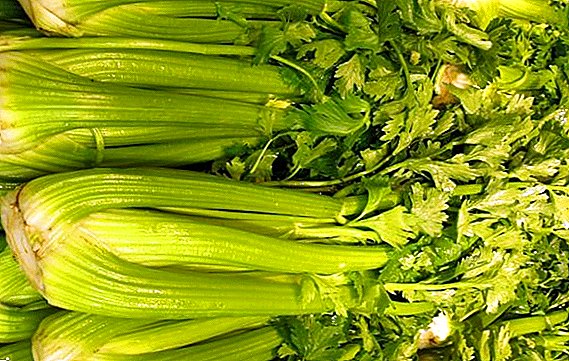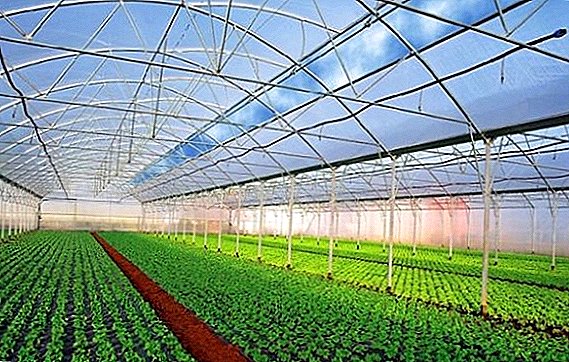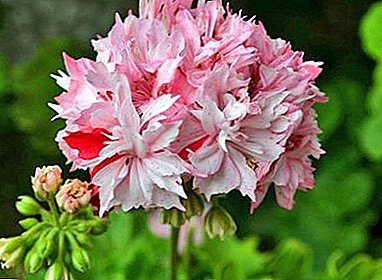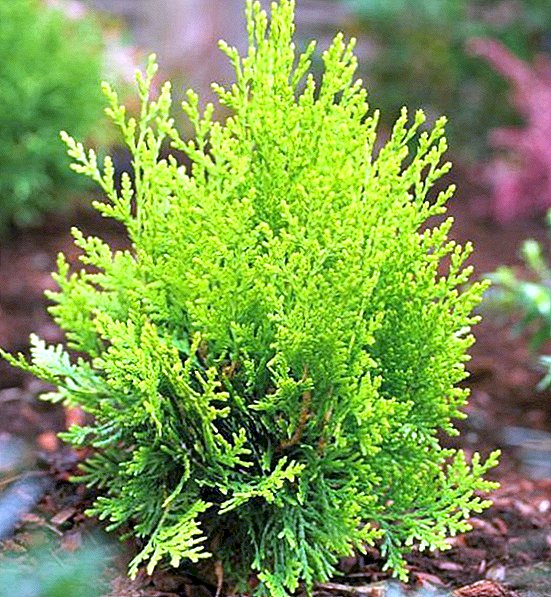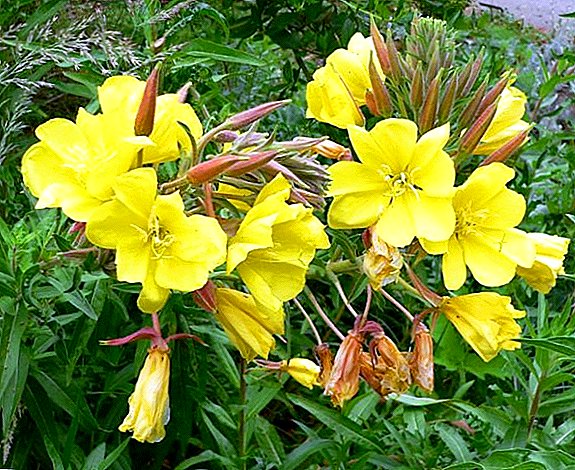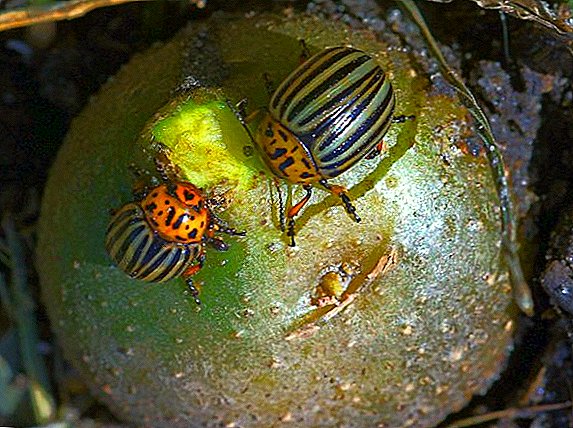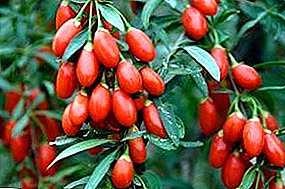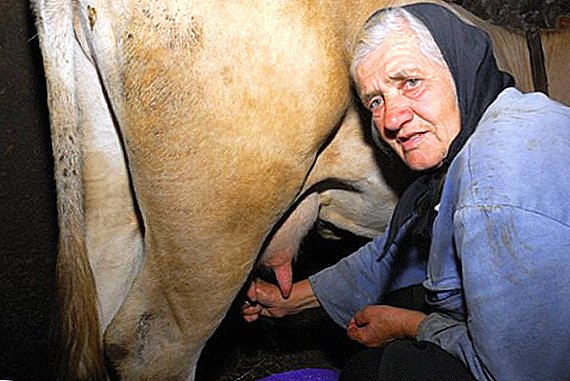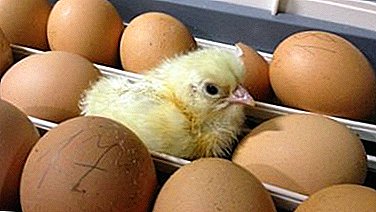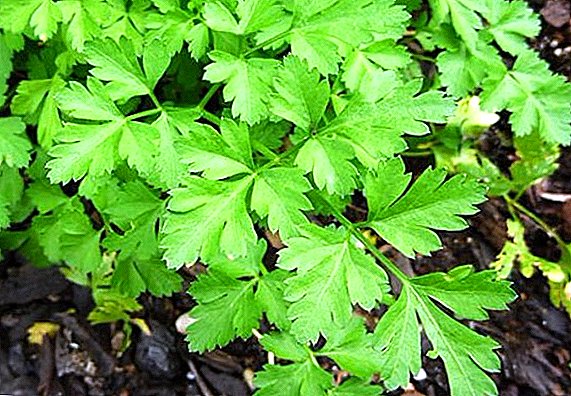 Parsley is one of the first plants to delight in spring with greens and a characteristic spicy smell. Due to the high content of vitamins and microelements, it is actively used both in cooking and in medicine. Experienced gardeners claim that the correct planting of parsley in the spring in the open ground will provide an excellent harvest.
Parsley is one of the first plants to delight in spring with greens and a characteristic spicy smell. Due to the high content of vitamins and microelements, it is actively used both in cooking and in medicine. Experienced gardeners claim that the correct planting of parsley in the spring in the open ground will provide an excellent harvest.
Did you know? Leaves of parsley in ancient Greece decorated the winners of sports.
What are the advantages of spring planting parsley
Each owner independently decides for himself when it is better to sow parsley - in spring or autumn. However, most prefer the first option. This is due to the fact that:
 sowing parsley in spring provides good germination of seeds, as they are no longer threatened by frost;
sowing parsley in spring provides good germination of seeds, as they are no longer threatened by frost;- when planting parsley in the fall, it can germinate before the first frost and die;
- In spring, greens appear a little later than when sown before winter, but it develops faster due to sufficient amount of sunlight and heat.
When to plant parsley in spring
Parsley is quite resistant to cold, so in the second half of April - early May, when the soil warms up a little, you can sow a crop. Seeds will germinate even at a temperature of +2 ° С and will stand frosts down to -9 ° С. A few weeks after planting parsley in the spring, you can cut the first greens.
Choosing a plot for sowing parsley
Before growing parsley in the spring, you need to choose the right plot. It should be well lit, in a place protected from drafts, with light and fertile soil.
The best predecessors for parsley will be cucumbers, potatoes and early cabbage. 
Important! Do not sow parsley in the spring in those areas where cilantro, carrot, cumin, and dill were previously grown.
How to prepare the soil and seeds for planting
In the fall, the soil should be dug up and cultivated under humus or peat (5 kg per 1 sq. M). In the spring, just before sowing parsley in open ground, it is advisable to feed the soil with complex mineral fertilizers.
Before planting, it is advisable to soak the seeds of the plant for at least half an hour in warm water and dry it a little.
Important! It is not recommended to make manure.
How to sow parsley in the spring
When parsley is planted, grooves are made in the ground with a depth of 1-2 cm and seeds are applied at the rate of 0.5 g per 1 square meter. m The distance between the grooves should be about 10-12 cm. After that, the seeds must be watered and sprinkled with a thin layer of soil. In order to retain moisture, you can cover the area with a film. 
How to care for parsley in the open field
Each gardener can sow and take care of parsley. She does not require much attention.
During dry periods, it is advisable to conduct moderate watering of the plant in the morning or evening hours, because in the absence of a sufficient amount of moisture, the greenery will dry out and become shallow.
 It is also necessary from time to time to remove from the beds weeds, which not only create shade, but also impoverish the soil.
It is also necessary from time to time to remove from the beds weeds, which not only create shade, but also impoverish the soil.
A couple of times per season it is recommended to feed the culture with saltpeter (about 50 g per 10 square meters of soil) or phosphate-potassium fertilizer.
Did you know? When growing leaf parsley, it is preferable to use saltpeter, and the root - phosphorus-potassium fertilizers.If the main goal is to grow large roots, it is necessary to thin the seedlings, leaving a few centimeters between them, and after 2 weeks repeat the procedure so that the distance between the bushes is about 7 cm.
Harvesting of greenery is carried out as ripening. You can seed the seed.
Diseases and pests parsley
Much of the harvest depends not only on when and how to sow parsley, but also on the correct control of plant diseases and pests.
 With white rot, the parsley root first becomes soft, brown, and then completely rot, the greens wither. In order to fight the disease, sick specimens are carefully destroyed, the crop rotation is observed correctly, and the plants are sprayed with a solution of Bordeaux liquids (1%) at the first symptoms.
With white rot, the parsley root first becomes soft, brown, and then completely rot, the greens wither. In order to fight the disease, sick specimens are carefully destroyed, the crop rotation is observed correctly, and the plants are sprayed with a solution of Bordeaux liquids (1%) at the first symptoms.
Downy mildew (peronosporosis) leads to complete drying of the leaves. Manifested by the appearance of oily spots on the foliage. On the lower side of the sheet, they have a characteristic gray-purple hue. Treat with a spray of copper chlorine (40 g per 10 liters of water; 0.4% suspension) or Bordeaux mixture (add 10 g of lime and 100 g of copper sulphate to 10 liters of water).
Rust causes yellow-brown spots on the underside of the leaves, which gradually increase and cover all foliage. Disease spores persist in wilted remains of weeds and cultivated plants. Therefore, to prevent disease, it is recommended to carefully dig the ground, remove weeds, monitor the quality of seed. Seeds for prophylaxis can be soaked for 30 minutes in water heated to 47-49 ° С for a few weeks before sowing and dried. At the first signs of infection, it is recommended to sprinkle parsley with a 1% Bordeaux mixture at an interval of 10 days until the symptoms disappear.
White spotting (septoriosis) is a fungal disease that is manifested by the appearance of light, ocher-yellow spots with a dark border on the leaves, stalks and petioles. Gradually, the plant turns yellow and dies. The measures of prevention and control are the same as with rust.
 Cercosporosis attacks the leaves and stems of the crop. Brown spots of irregular shape appear on them. Over time, they brighten, and a dark brown border appears at the edges. Parsley grows poorly, turns yellow and dries. The measures of prevention and control are the same as with rust.
Cercosporosis attacks the leaves and stems of the crop. Brown spots of irregular shape appear on them. Over time, they brighten, and a dark brown border appears at the edges. Parsley grows poorly, turns yellow and dries. The measures of prevention and control are the same as with rust.
Hiking worms gnaw parsley leaves, leave holes in them. These brown caterpillars crawl out of the soil only at night. They should be collected and destroyed whenever possible. It is also worth attracting insects to the site that will eat the pest - wasps, ladybirds, spiders.
Caterpillar black swallowtail, having a black and yellow color, can lurk in the parsley itself. Actively eats leaves of a plant. The best preventive measures will be the correct crop rotation and the purchase of quality seeds.
 Carrot aphid feeds on plant sap and is capable of completely destroying the parsley crop in a short time. Dwells in groups on the back of the leaves. The best method to combat pest will be spraying garlic solution. It is better to repeat the procedure twice with an interval of several days.
Carrot aphid feeds on plant sap and is capable of completely destroying the parsley crop in a short time. Dwells in groups on the back of the leaves. The best method to combat pest will be spraying garlic solution. It is better to repeat the procedure twice with an interval of several days.
Light cream carrot fly worms can feed on parsley roots. In this case, the leaves become a characteristic purple color. A reliable method of struggle will be tillage under parsley with hydrogen peroxide solution (1 part of 35% hydrogen peroxide per 10 parts of water),
In general, parsley is unpretentious in planting and care, and its excellent taste and useful properties will more than pay off the effort invested.


 sowing parsley in spring provides good germination of seeds, as they are no longer threatened by frost;
sowing parsley in spring provides good germination of seeds, as they are no longer threatened by frost;